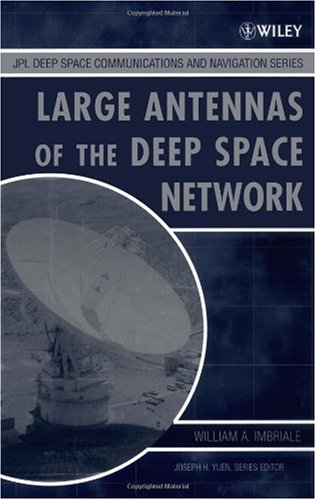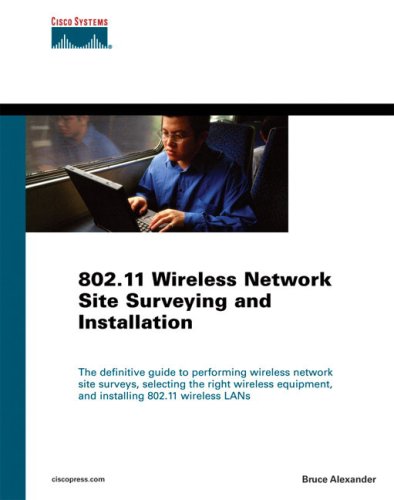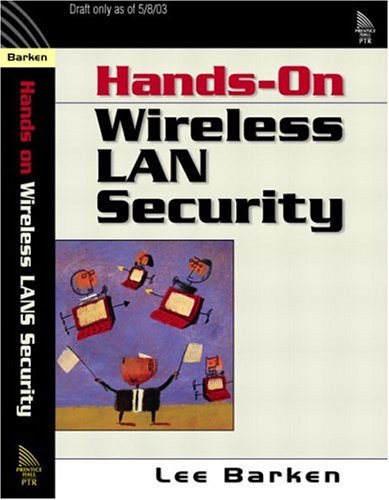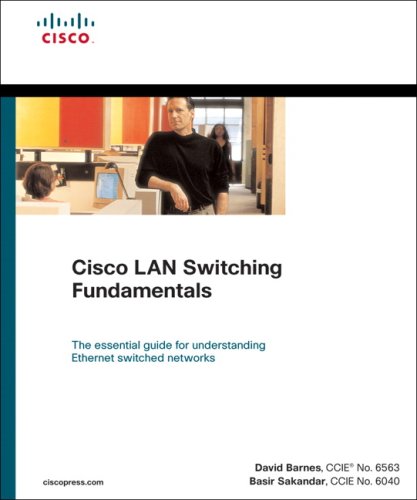Table of contents :
Cover……Page 1
MASTER TABLE OF CONTENTS……Page 5
Generic Access Profile……Page 13
Contents……Page 15
Foreword……Page 19
1.2.1 Requirement status symbols……Page 21
1.2.3 Notation for timers and counters……Page 22
2.2 Configurations and roles……Page 23
2.4 Profile fundamentals……Page 24
2.5 Conformance……Page 25
3.2.2 Bluetooth device name (the user-friendly name)……Page 26
3.2.3 Bluetooth passkey (Bluetooth PIN)……Page 27
3.2.4 Class of Device……Page 28
3.3 Pairing……Page 29
4.1 Discoverability modes……Page 30
4.1.2 Limited discoverable mode……Page 31
4.2.1 Non-connectable mode……Page 32
4.3.2 Pairable mode……Page 33
5.1.2 Term on UI level……Page 34
5.2 Security modes……Page 35
5.2.3 Security modes 3 (link level enforced security)……Page 37
6.1.2 Term on UI level……Page 38
6.2.1 Purpose……Page 39
6.2.4 Conditions……Page 40
6.3.3 Description……Page 41
6.4.2 Term on UI level……Page 42
6.5.2 Term on UI level……Page 43
6.5.3 Description……Page 44
6.5.4 Conditions……Page 45
7.1.2 Term on UI level……Page 46
7.1.3 Description……Page 47
7.1.4 Conditions……Page 48
7.2.3 Description……Page 49
7.2.4 Conditions……Page 50
7.3.3 Description……Page 51
7.4 Establishment of additional connection……Page 52
8.2 Connection-related definitions……Page 53
8.3 Device-related definitions……Page 54
8.5 Security-related definitions……Page 55
9 Annex A (Normative): Timers and constants……Page 57
10.1 lmp-authentication……Page 58
10.3 Service discovery……Page 59
11 References……Page 61
Service Discovery Application Profile……Page 63
Contents……Page 65
Foreword……Page 67
1.1 Scope……Page 69
1.2 Symbols and conventions……Page 70
2.1 Profile stack……Page 71
2.2 Configurations and roles……Page 72
2.3 User requirements and scenarios……Page 73
2.5 Conformance……Page 74
3.2 Mode selection……Page 75
4.1 The service discovery application……Page 76
4.2 Service primitives abstractions……Page 78
4.3 Message sequence charts (MSCs)……Page 80
5 Service Discovery……Page 82
5.1 An SDP PDU exchange example……Page 83
6 L2CAP……Page 85
6.3.2 Flush Time-out……Page 86
6.4 SDP transactions and L2CAP connection lifetime……Page 87
7.1 Capability overview……Page 89
7.3 Link policy……Page 90
8.1 Capability overview……Page 91
8.2 Inquiry……Page 92
8.6 Error behavior……Page 93
9.1 Normative references……Page 94
10 Definitions……Page 95
11 Appendix A (Informative): Service primitives and the Bluetooth PDUs……Page 96
Cordless Telephony Profile……Page 99
Contents……Page 101
1.2 Profile Dependencies……Page 105
1.3.1 Requirement status symbols……Page 106
1.3.3 Notation for timers and counters……Page 107
2.1 Profile stack……Page 108
2.2 Configurations and roles……Page 109
2.3 User requirements and scenarios……Page 110
2.5 Feature definitions……Page 111
2.6 Conformance……Page 112
3 Application layer……Page 113
4.1.2 Connecting to another TL……Page 115
4.2.6 Call confirmation……Page 116
4.2.11 Call clearing……Page 117
4.3.3 Register recall……Page 118
4.4.2 Configuration distribution……Page 119
4.5 Connectionless procedures……Page 120
4.6 TCS-BIN Message overview……Page 121
4.7 Information Element overview……Page 122
4.7.3 Calling party number……Page 123
4.8 Link loss……Page 124
5 Service Discovery procedures……Page 125
6.2.3 Quality of Service……Page 126
7 LMP procedures overview……Page 127
7.3 Encryption key size……Page 128
8 LC features……Page 129
8.2 Inter-piconet capabilities……Page 130
9.2 Security aspects……Page 131
9.3.1 Bonding……Page 132
10.1 Outgoing external call without post-dialling……Page 133
10.2 Outgoing external call with post-dialling……Page 134
10.4 Incoming external call, SETUP delivered on connection-oriented channel……Page 135
10.7 DTMF signalling failure……Page 136
10.9 Configuration distribution……Page 137
10.11 Fast inter-member access……Page 138
11 Timers and counters……Page 140
12 References……Page 141
13 List of Figures……Page 142
14 List of Tables……Page 143
Intercom Profile……Page 145
Contents……Page 147
1.2 Profile Dependencies……Page 149
1.3.2 Signalling diagram conventions……Page 150
2.1 Profile stack……Page 151
2.3 User requirements and scenarios……Page 152
2.6 Conformance……Page 153
3 Application layer……Page 154
4.1.4 Failure of call establishment……Page 155
4.2 TCS Binary Message overview……Page 156
4.3 Information Element overview……Page 157
4.4 Link loss……Page 158
5 SDP Interoperability Requirements……Page 159
6.2.3 Quality of Service……Page 160
7.1 Capability overview……Page 161
8.1 Capability overview……Page 162
8.2 Class of Device……Page 163
9.3 Idle mode procedures……Page 164
10.1 Call establishment……Page 165
10.2 Call Clearing……Page 166
11 Timers and counters……Page 167
12 List of Figures……Page 168
13 List of Tables……Page 169
Serial Port Profile……Page 171
Contents……Page 173
Foreword……Page 175
1.3 Symbols and conventions……Page 177
2.1 Profile stack……Page 178
2.3 User requirements and scenarios……Page 179
2.5 Conformance……Page 180
3.1.1 Establish link and set up virtual serial connection……Page 181
3.1.3 Register Service record in local SDP database……Page 182
3.2 Power mode and link loss handling……Page 183
4 RFCOMM Interoperability Requirements……Page 184
4.3 Remote Port Negotiation……Page 185
5.2 Signalling……Page 186
5.3.3 Quality of Service……Page 187
6.1 SDP Service Records for Serial Port Profile……Page 188
6.2 SDP Procedures……Page 189
7.3 Link policy……Page 190
8.1 Capability overview……Page 191
8.5 Error behavior……Page 192
9 References……Page 193
10 List of Figures……Page 194
11 List of Tables……Page 195
Headset Profile……Page 197
Contents……Page 199
1.2 Profile Dependencies……Page 201
1.3.1 Requirement status symbols……Page 202
1.4 Signalling diagram conventions……Page 203
2.1 Profile stack……Page 204
2.2 Configuration and roles……Page 205
2.4 Profile fundamentals……Page 206
2.5 Conformance……Page 207
3 Application layer……Page 208
4.2 Audio Gateway Initiated ACL Connection Establishment……Page 209
4.3 Headset Initiated ACL Connection Establishment……Page 210
4.4 Audio connection release……Page 211
4.5.1 Audio connection transfer from AG to HS……Page 212
4.6 Remote audio volume control……Page 213
4.7.3 Bluetooth-defined AT capabilities……Page 215
4.8.1 Connection handling without PARK mode……Page 216
4.8.2 Connection handling with PARK mode……Page 217
5.2 L2CAP Interoperability Requirements……Page 219
5.3 SDP Interoperability Requirements……Page 220
5.4 Link Manager (LM) Interoperability Requirements……Page 221
5.5.1 Class of Device……Page 222
6.3 Idle mode procedures……Page 223
7 References……Page 224
8 List of Figures……Page 225
9 List of Tables……Page 226
Dial-up Networking Profile……Page 227
Contents……Page 229
1.2 Bluetooth Profile Structure……Page 231
1.3.1 Requirement status symbols……Page 232
1.3.3 Notation for timers and counters……Page 233
2.1 Profile stack……Page 234
2.2 Configurations and roles……Page 235
2.3 User requirements and scenarios……Page 236
2.5 Conformance……Page 237
3.4 Voice calls……Page 238
4.1.2 Commands……Page 239
4.2 Call progress audio feedback……Page 241
4.3 Escape sequence……Page 242
5.3 SDP Interoperability Requirements……Page 243
5.4 Link Manager (LM) Interoperability Requirements……Page 244
5.5.1 Class of Device usage……Page 245
6.2 Security aspects……Page 246
6.3.1 Bonding……Page 247
7 References……Page 248
8 List of Figures……Page 249
9 List of Tables……Page 250
Fax Profile……Page 251
Contents……Page 253
1.2 Profile Dependencies……Page 255
1.3.1 Requirement status symbols……Page 256
1.3.2 Signalling diagram conventions……Page 257
2.1 Profile stack……Page 258
2.2 Configurations and roles……Page 259
2.4 Profile fundamentals……Page 260
2.5 Conformance……Page 261
3.4 Voice calls……Page 262
4.1.2 Fax Service Class selection procedure……Page 263
4.2 Call progress audio feedback……Page 264
5.3 SDP Interoperability Requirements……Page 265
5.4 Link Manager (LM) Interoperability Requirements……Page 266
5.5.1 Class of Device usage……Page 267
6.1 Modes……Page 268
6.3.1 Bonding……Page 269
7 References……Page 270
8 List of Figures……Page 271
9 List of Tables……Page 272
LAN Access Profile……Page 273
Contents……Page 275
1.1 Scope……Page 277
1.3 Symbols and conventions……Page 278
2.2 Configurations and roles……Page 279
2.3 User requirements and scenarios……Page 280
2.5 Conformance……Page 282
3.1 Security……Page 283
3.2 Generic Modes……Page 284
3.3 Additional Parameters……Page 285
4.1 Initialization of LAN Access Point service……Page 286
4.3 Establish LAN Connection……Page 287
4.5 Disconnect LAN Connection……Page 288
5.1 Initialize PPP……Page 289
5.4 Disconnect PPP Connection……Page 290
5.5 PPP Authentication Protocols……Page 291
6 RFCOMM……Page 292
7.1 SDP service records……Page 293
8 L2CAP……Page 295
9 Link Manager……Page 296
9.1 Profile Errors……Page 297
10 Link control……Page 298
11.1.1 No responses to inquiry……Page 299
11.2 Maximum Number of users……Page 300
12 APPENDIX A (Normative): Timers and counters……Page 301
13.1 PC-2-PC configuration……Page 302
14.2 The IPCP Protocol……Page 303
14.2.4 NetBIOS over IP……Page 304
15 List of Figures……Page 305
16 List of Tables……Page 306
17.2 Informative references……Page 307
Generic Object Exchange Profile……Page 309
Contents……Page 311
Foreword……Page 313
1.2 Bluetooth Profile Structure……Page 315
1.3 Bluetooth OBEX-Related Specifications……Page 316
1.4.1 Requirement status symbols……Page 317
1.4.2 Signaling diagram conventions……Page 318
2.2 Configurations and roles……Page 319
2.4 Profile fundamentals……Page 320
3 User interface aspects……Page 321
4.4 Pulling a Data Object……Page 322
5.2 OBEX Headers……Page 323
5.4 Establishment of OBEX session……Page 324
5.4.1 OBEX Session without Authentication……Page 325
5.4.2 OBEX Session with Authentication……Page 327
5.5 Pushing Data to Server……Page 330
5.6 Pulling Data from Server……Page 331
5.7 Disconnection……Page 332
6.5 Link Control (LC) Interoperability Requirements……Page 333
6.5.1 Inquiry and Inquiry Scan……Page 334
7.2 Security aspects……Page 335
7.3.1 Bonding……Page 336
8.1 Normative references……Page 337
Object Push Profile……Page 339
Contents……Page 341
Foreword……Page 343
1.2 Bluetooth Profile Structure……Page 345
1.3 Bluetooth OBEX-Related Specifications……Page 346
1.4.1 Requirement status symbols……Page 347
1.4.2 Signaling diagram conventions……Page 348
2.2 Configurations and roles……Page 349
2.4 Profile fundamentals……Page 350
3.2 Function Selection, Push Clients……Page 351
3.3.2 Business Card Pull……Page 352
3.3.3 Business Card Exchange……Page 353
4.2.1 Content Formats……Page 355
4.3 Business Card Pull Feature……Page 356
4.4.1 Owner’s Business Card……Page 357
4.4.2 Application Procedure Business Card Exchange……Page 358
5.2.1 OBEX Headers for the Object Push Feature……Page 359
5.2.2 OBEX Headers for the Business Card Pull and Exchange Features……Page 360
5.7 Disconnection……Page 361
6.1 SD Service Records……Page 362
6.2 SDP Protocol Data Units……Page 363
7.1 Normative references……Page 364
File Transfer Profile……Page 365
Contents……Page 367
Foreword……Page 369
1.2 Bluetooth profile structure……Page 371
1.3 Bluetooth OBEX-Related Specifications……Page 372
1.4.1 Requirement status symbols……Page 373
1.4.2 Signaling diagram conventions……Page 374
2.2 Configurations and roles……Page 375
2.4 Profile fundamentals……Page 376
3.2 Function Selection, Clients……Page 378
3.3 Application usage……Page 379
4.2 Folder Browsing……Page 381
4.3 Object Transfer……Page 383
4.4 Object Manipulation……Page 384
5.1 OBEX Operations Used……Page 385
5.4 Establishment of OBEX session……Page 386
5.5.2 Setting the Current Folder (Forward)……Page 387
5.5.3 Setting the Current Folder (Backward)……Page 388
5.5.4 Setting the Current Folder (Root)……Page 389
5.6.2 Pushing Folders……Page 390
5.8.1 Deleting Files……Page 392
5.9 Disconnection……Page 393
6.1 SD service records……Page 394
6.2 SDP protocol data units……Page 395
7.1 Normative references……Page 396
Synchronization Profile……Page 397
Contents……Page 399
Foreword……Page 401
1.2 Bluetooth Profile Structure……Page 403
1.3 Bluetooth OBEX Related Specifications……Page 404
1.4.1 Requirement status symbols……Page 405
1.4.2 Signaling diagram conventions……Page 406
2.2 Configurations and roles……Page 407
2.3 User requirements and scenarios……Page 408
2.4 Profile fundamentals……Page 409
3.2 Application Usage Events……Page 410
3.2.1 Synchronization Scenario……Page 411
3.2.3 Automatic Synchronization Scenario……Page 412
4.2 Synchronization Feature……Page 413
4.4 Automatic Synchronization Feature……Page 414
5 IrMC Synchronization Requirements……Page 415
6.2 OBEX Headers……Page 417
6.7 Disconnection……Page 418
7.1.1 Synchronization Service……Page 419
7.1.2 Sync Command Service……Page 420
7.2 SDP Protocol Data Units……Page 421
8.1 Normative references……Page 422
Revision History……Page 425
Revision History……Page 423
Contributors……Page 433
Contributors……Page 435
Acronyms and Abbreviations……Page 441
List of Acronyms and Abbreviations……Page 443
Index……Page 447
Specification of the Bluetooth System
Free Download
Direct Download: Coming soon..
Download link:
Category: Computers , NetworkingSign in to view hidden content.
Be the first to review “Specification of the Bluetooth System” Cancel reply
You must be logged in to post a review.
Related products
- Computers , Networking
How Secure Is Your Wireless Network? Safeguarding Your Wi-Fi LAN
Free Download







Reviews
There are no reviews yet.